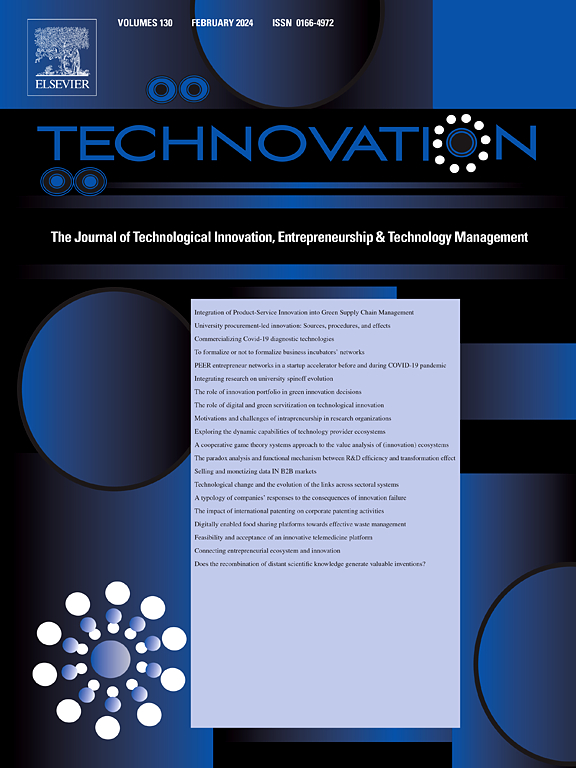通过机会识别引导破坏性创新:团队学习的配置方法
IF 10.9
1区 管理学
Q1 ENGINEERING, INDUSTRIAL
引用次数: 0
摘要
预先感知、解释和预测颠覆性创新至关重要,但也具有挑战性。虽然认识到破坏性创新机会更有可能是集体努力的结果,但以往的研究主要集中在组织外部驱动因素和个人层面的属性上,或者只关注单一因素的简单影响。最近的研究强调了团队学习在构建组织动态能力微观基础中的战略作用。本研究采用配置方法(fsQCA)来考察个人和团队层面的前因如何通过团队学习过程(直觉、解释和整合)相互作用,以促进对破坏性创新机会的认识。根据来自65个团队的现场数据,我们确定了三种不同的配置:共享集成、即兴启发和星型领导。具体来说,团队可以通过集体智慧主动识别破坏性创新机会,这种集体智慧可以通过团队内部的分享和整合产生,可以通过即兴创作的学习过程得到启发,也可以通过团队中优秀员工的指导得到催化。本研究通过阐述团队如何通过学习过程协作和创造性地识别破坏性机会,为现有的破坏性创新文献做出了贡献。此外,它还推进了有效管理中断的组织能力的微观基础研究。配置方法对破坏性创新背景下的机会识别提供了细致入微的理解。本文章由计算机程序翻译,如有差异,请以英文原文为准。
Navigating disruptive innovation through opportunity recognition: A configurational approach to team learning
Perceiving, interpreting, and predicting disruptive innovation ex ante are crucial but challenging. Although recognizing disruptive innovation opportunities is more likely a result of collective efforts, prior research has primarily focused on external organizational drivers and individual-level attributes or only focused on simple effect of single factors. Recent studies highlight the strategic role of team learning in building the micro-foundations of organizational dynamic capabilities. This study employs a configurational approach (fsQCA) to examine how individual and team-level antecedents interact to facilitate the recognition of disruptive innovation opportunities through team learning processes (intuition, interpretation, and integration). Drawing on field data from 65 teams, we identify three distinct configurations: Sharing-integrated, Improvisation-inspired, and Star-led. Specifically, teams can proactively recognize disruptive innovation opportunities through collective wisdom, which is generated by sharing and integration within the team, inspired by a learning process of improvisation, or catalyzed by the guidance of star performers in the team. This study contributes to the existing literature on disruptive innovation by elaborating how teams can collaboratively and creatively recognize disruptive opportunities through learning processes. Furthermore, it advances micro-foundations research on organizational capabilities in effectively managing disruption. The configurational approach provides a nuanced understanding of opportunity recognition within the context of disruptive innovation.
求助全文
通过发布文献求助,成功后即可免费获取论文全文。
去求助
来源期刊

Technovation
管理科学-工程:工业
CiteScore
15.10
自引率
11.20%
发文量
208
审稿时长
91 days
期刊介绍:
The interdisciplinary journal Technovation covers various aspects of technological innovation, exploring processes, products, and social impacts. It examines innovation in both process and product realms, including social innovations like regulatory frameworks and non-economic benefits. Topics range from emerging trends and capital for development to managing technology-intensive ventures and innovation in organizations of different sizes. It also discusses organizational structures, investment strategies for science and technology enterprises, and the roles of technological innovators. Additionally, it addresses technology transfer between developing countries and innovation across enterprise, political, and economic systems.
 求助内容:
求助内容: 应助结果提醒方式:
应助结果提醒方式:


